
Static Data Masking
Introduction
Static data masking is a technique used for protecting sensitive data by creating a masked copy of a database tables. The masked data is functionally and structurally similar to the original data but does not reveal any sensitive information. Organizations with strict regulations regarding the exposure of sensitive data rely on static data masking to safeguard their business and comply with data privacy regulations.
This article explores static masking in depth. We’ll examine how it differs from dynamic data masking. We’ll also discuss DataSunrise’s implementation of static masking. The focus will be on how this approach protects sensitive data.
Differences between Dynamic and Static Data Masking
Both static and dynamic data masking serve the purpose of protecting sensitive data, but they differ in their approach. Static data masking creates a separate, masked copy of the database, where sensitive data is replaced with realistic but fictitious information. This approach is safer because no traces of the original sensitive data are left in the masked copy. Static masking is particularly useful when organizations need to grant database access to external parties for research, testing, or analysis purposes.
On the other hand, dynamic data masking masks data in real-time as it is queried from the database, without storing the masked data. Dynamic masking is more lightweight since it doesn’t require creating a full copy of the database, but only masks the query results. To better understand the differences between static and dynamic masking, and when to use each approach, please refer to our article on dynamic data masking.
How DataSunrise Implements Static Data Masking
DataSunrise provides users with powerful tools for securing their data across a wide variety of database management systems (DBMS), including SQL Server, Oracle, PostgreSQL, MongoDB, and even cloud-based databases like Amazon Redshift. With DataSunrise’s intuitive interface, users can easily implement static data masking into their projects without modifying the source database.
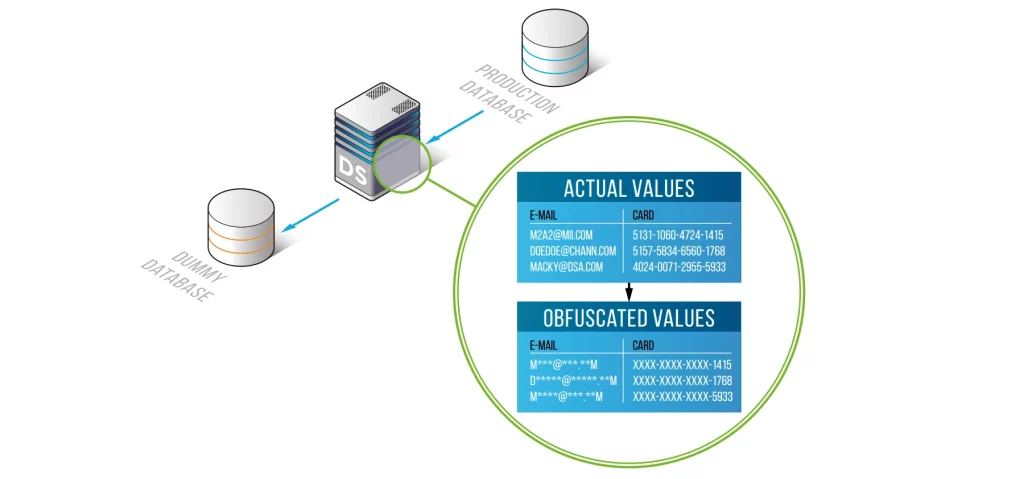
DataSunrise operates as a proxy, so no changes to the database are needed—only access to the database and proper configuration of the DataSunrise server. Users can configure static masking by specifying masking tasks, which consist of four main sections : Source and Target Instances, Transferred Tables, Startup Frequency, Remove Results Older Than (optional).
Source and Target Instances
In static masking, the main idea is that the masked data is created in an additional copy. This means you should specify two instances when setting up a static masking task: the source and the target. In the image below, we have selected the source instance (left) and the target instance (right).
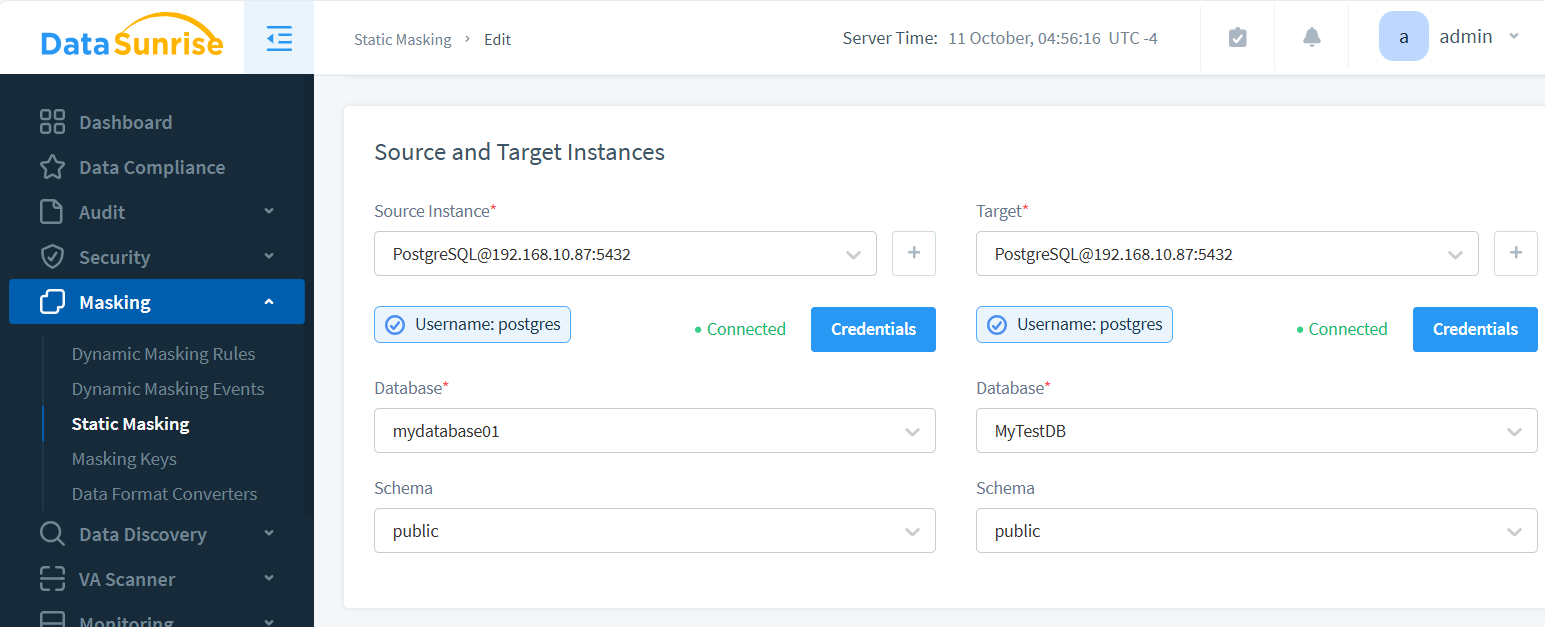
Transferred Tables: Masked Data Consistency
DataSunrise’s static masking feature provides the ability to preserve the integrity and consistency of the masked data by maintaining unique constraints, foreign key relationships, indexes, check constraints, and other database-specific elements. This ensures that the masked database remains fully functional and can be utilized for various non-production purposes without encountering data integrity issues or disrupting the relationships between tables.
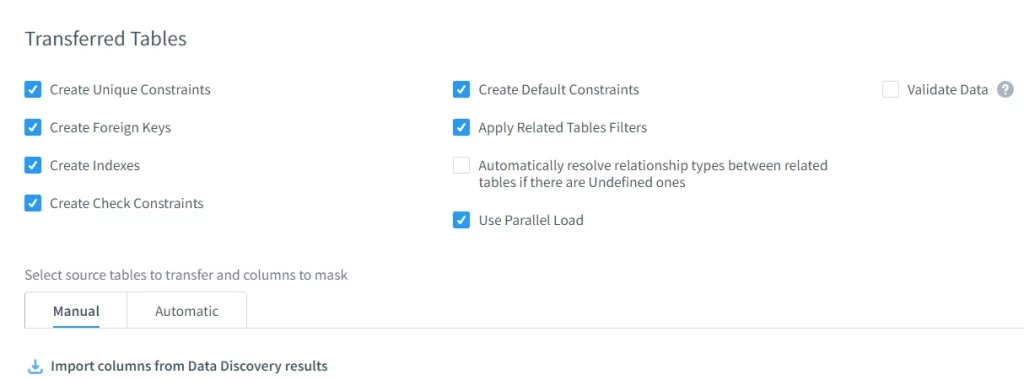
Startup Frequency
In this section users can choose to initiate the masking process manually, run it once at a specified time, or configure recurring masking jobs at regular intervals, such as minutely, hourly, daily, or according to a custom schedule.

Remove Results Older Than
When organizations frequently mask data, it’s important to manage the storage space used by masked databases. DataSunrise helps solve this problem by allowing users to automatically delete old masked data. This feature lets organizations set how often outdated masked databases are removed, optimizing storage resources and ensuring that the latest masked data is available for non-production use.

Real Experience of Using DataSunrise for Masking
Let’s say we have a PostgreSQL database with a ‘customers’ table containing users’ names, credit card numbers, email addresses, and other information. Currently, when querying the data, it looks like this:

We navigate to Masking – Static Masking and create a new task by pressing the ‘+Add New Task’ button. In this step, we select the source and target instances. This defines where the data comes from and where DataSunrise puts statically masked data. We also select tables and then columns to mask, along with their corresponding masking methods.
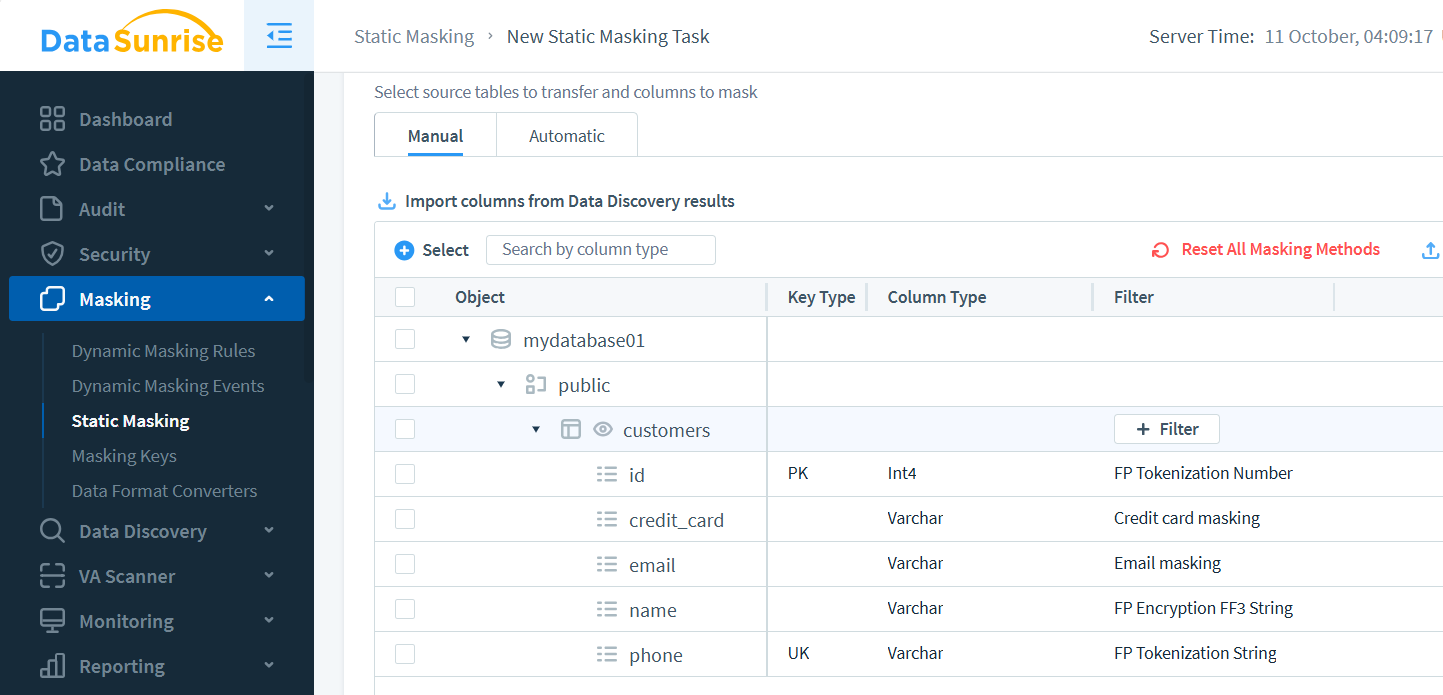
You may note that there are several masking methods used in the image above (‘Filter’ column). Those with ‘FP’ prefixes are format-preserving methods. These are used not only for hiding data but also for maintaining the utility of masked data. When we run the task, it should complete with a successful status and display ‘Last Success Time’.
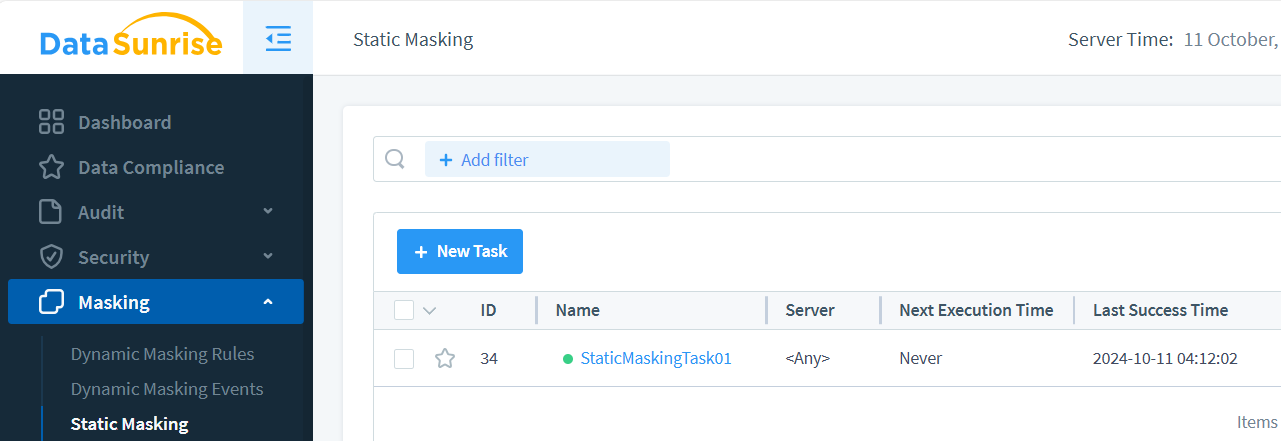
After running the task, the target database contains a masked data table with the same name as the original.

Benefits of Static Masking with DataSunrise
By leveraging static data masking with DataSunrise, organizations can:
- Protect Sensitive Data: Safeguard personally identifiable information (PII) and financial data. Reduce the risk of data breaches by preventing unauthorized access.
- Comply with Regulations: Meet data privacy regulations like GDPR, HIPAA, CCPA, and PCI DSS. Mask sensitive data before sharing or using in non-production environments.
- Enable Secure Data Sharing: Share masked data with external partners without compromising privacy. Foster collaboration and leverage external expertise safely.
- Simplify Implementation: Implement data masking quickly with DataSunrise’s intuitive interface. Use automated data discovery and pre-built masking algorithms. No extensive coding or database modifications needed.
- Maintain Data Consistency: Ensure masked data maintains referential integrity across tables and databases. Use masked databases for testing, development, and analytics without data integrity issues.
Conclusion
Static data masking is an essential tool for organizations seeking to protect sensitive data from unauthorized access and comply with data privacy regulations. DataSunrise provides a powerful and flexible static masking solution that enables companies to create masked copies of their databases easily and securely.
By leveraging DataSunrise’s static masking capabilities, organizations can safeguard sensitive information, enable secure data sharing with external parties, and maintain data consistency across non-production environments.
Data privacy and security are top priorities for organizations worldwide. Static masking is a critical component of comprehensive data protection strategies. It will continue to be important in the future. DataSunrise is well-positioned to meet organizations’ evolving needs in this area. Their solution adapts to changing data protection requirements. Contact our team of experts to schedule a demo and discover the possibilities it provides now.
